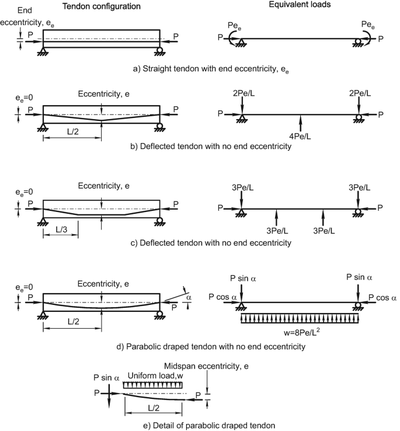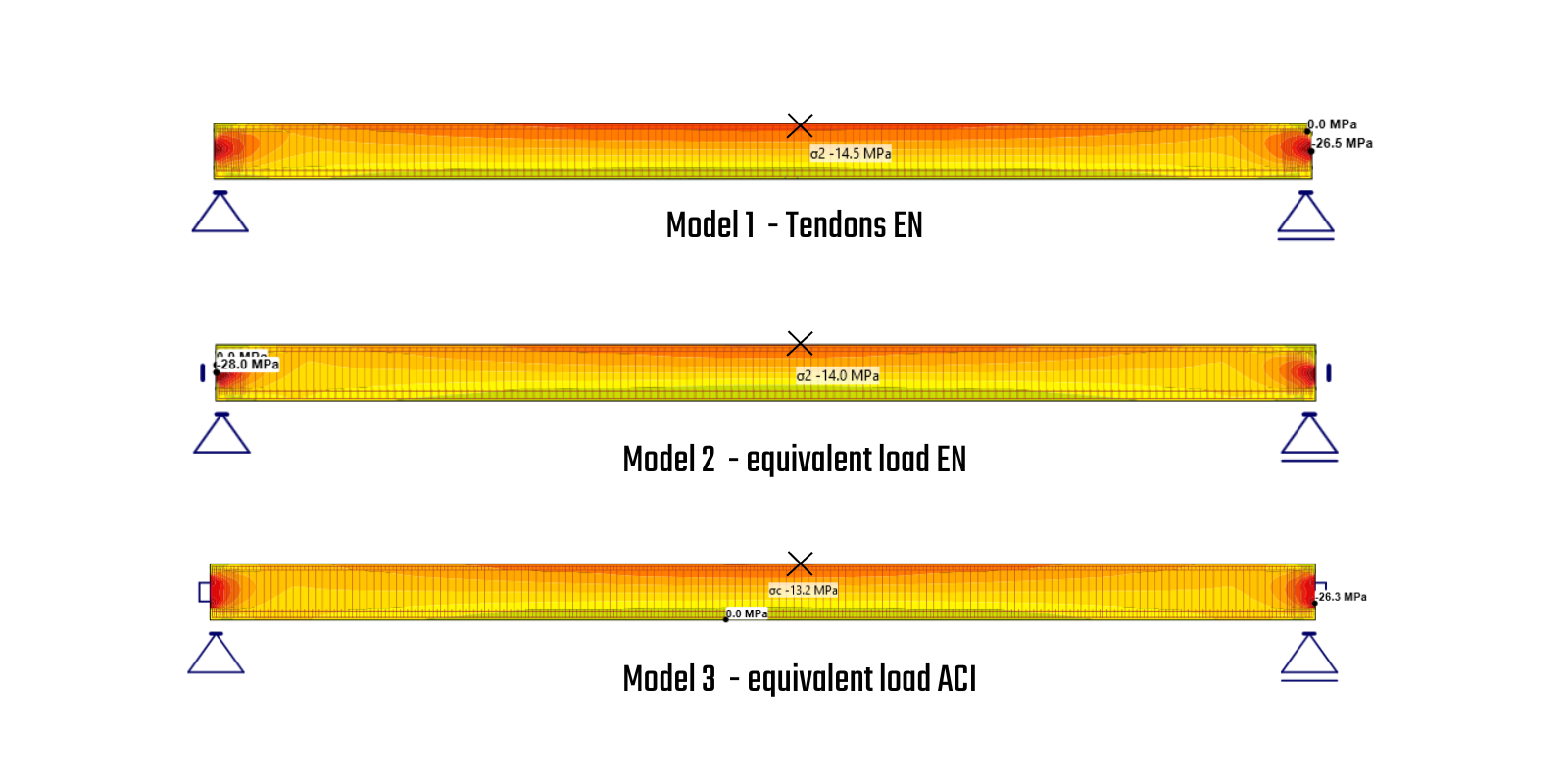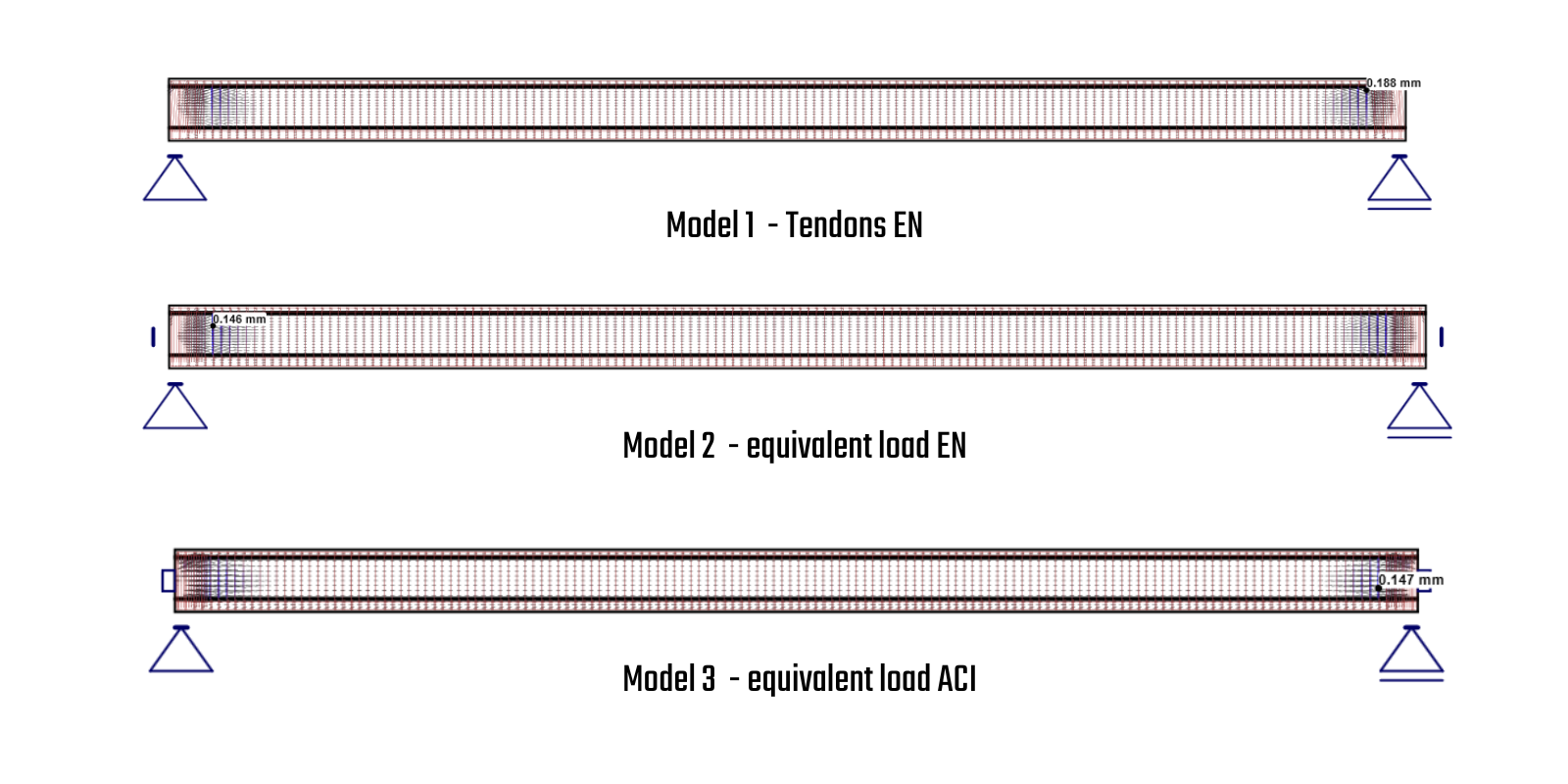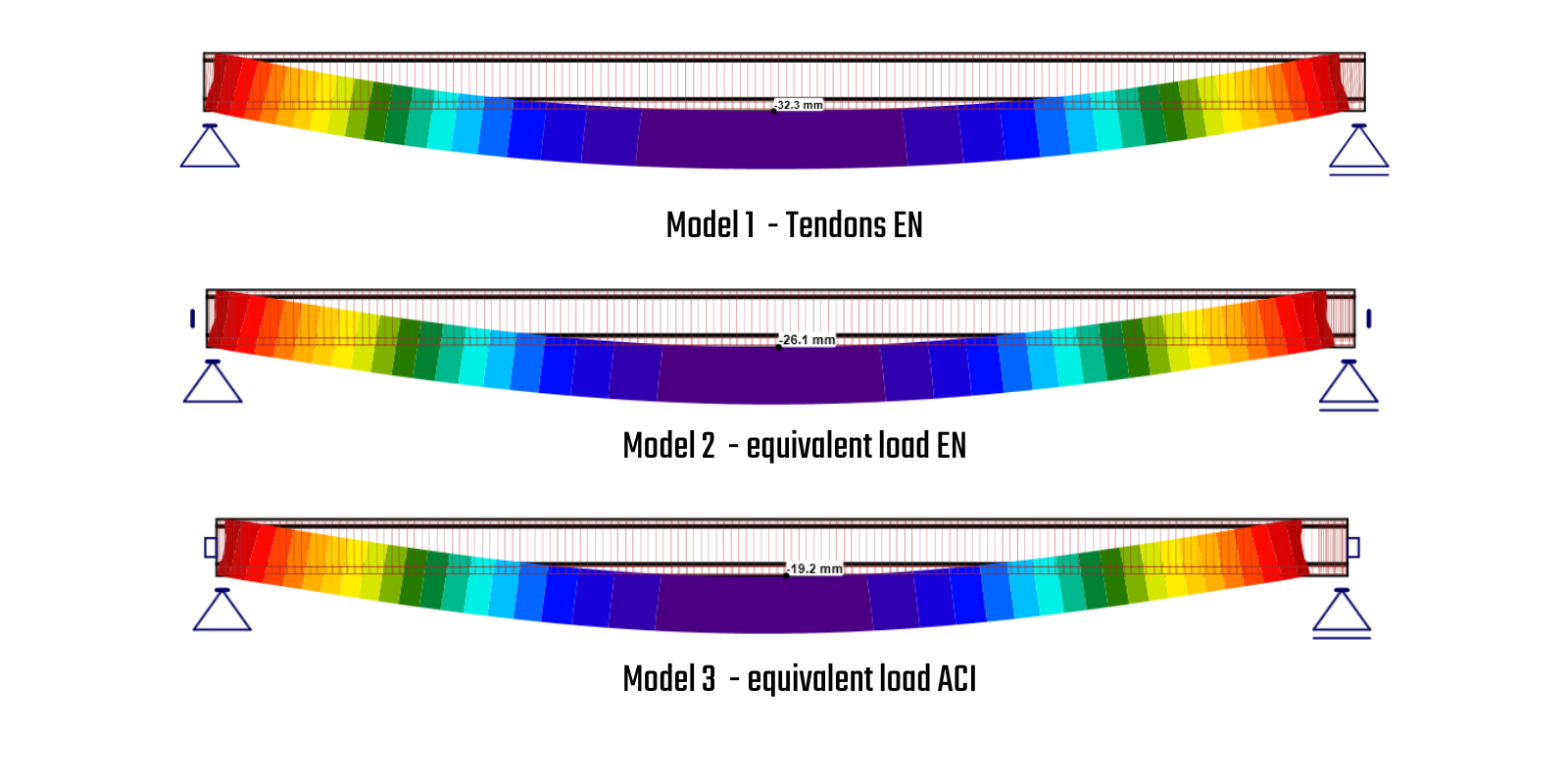Alternative method of designing prestressing in Detail (Equivalent Load Method)
Equivalent Load Method
In this method, all forces acting on the concrete member by the prestressing tendon are determined and used to evaluate the prestressing effects on the beam. These forces are expressed as equivalent loads and occur at the anchorage points and at the points where the cable changes direction.
It follows that the basic assumption is to correctly determine what the equivalent load will look like according to the specific case. To give an idea, some examples are given in the figures below. Alternatively, it is possible to look for references in other materials.
Prestressed Concrete (Equivalent Load Concept) - Rabin Tuladhar:
Articles about equivalent load method regarding ACI:
Shear Component of Prestress by Equivalent Loads - David Darwin
Equivalent Load Method for Analyzing prestressed Concrete Structures - Robert B. B. Moorman
Prestressing in IDEA StatiCa Detail
IDEA Statica Detail is software based on the FEA method (CSFM). It focuses mainly on discontinuity regions, but solving entire beams is possible. For Eurocode, the feature for inserting prestressing directly using cables is implemented. For a comparison of the results between the Detail and the empirical solution from Eurocode and information on how to account for long-term losses and creep, see the article: Prestressing in Detail.
Only the second part of the article above, regarding the coefficient input for losses and creep factor, is valid for ACI. The tendon design must then be replaced by the equivalent load. When the equivalent load (prestressing) is added as the extra load case, it is simply put into combinations. Losses and other factors can then be included as a factor when creating combinations.
IDEA StatiCa will provide insight into the behavior of the prestressed structure, such as stress values in the concrete, stress concentration in the concrete, cracks, and deflection.
Examples
In the following section, we briefly compare the results from the three models.
- The first example is one of a sample project using post-tensioned tendons, according to Eurocode.
- The second example is an almost identical example, but the cables have been replaced with equivalent loads, still using the materials and other parameters according to Eurocode.
- The third example is the same design, using equivalent loads and according to ACI.
There is a common assignment for the examples. We have a post-tensioned bridge beam, 30 meters long. The same cross-section is used everywhere. Reinforcement size varies slightly for model 3 because we have a different material library for ACI. The other material parameters are set to be almost the same modifying safety factors.
For the first model, we used the possibility of cable design including automatic calculation of short-term losses. For the other two, equivalent loads were calculated based on geometry, tendon size, and stress after anchorage. The other losses are estimated and included in the combinations.
- Stress after anchorage 1290 Mpa -> Equivalent Load: P=4050 kN, p=26.6 kN/m, Ph=399 kN (f=0.74, L=30 m)
Stress
We have slightly different types of results for each model, especially the assessments that vary depending on which standard is available and whether we have the tendons modeled directly. However, what we can compare in all cases are mainly stresses in the concrete, cracks, and deflections. It can be seen that the stress distributes similarly and the values are very almost equal. Although a simplified approach has been used for Models 2 and 3. The biggest difference is in the anchoring area, which can also be seen in the cracks.
Cracks
A slightly different element was used for each model to distribute the concentrated force (PLA - option only for EN, for ACI the bearing plate was used). However, the problem area is the same: the anchorage area and the large splitting force.
Deflection
Deflection varies slightly. This is probably the most noticeable difference between models (with and without entity tendon) and, therefore, stiffness. However, keep in mind that we have a beam length of 30 m. For the initial design, this indicator is sufficient.
Notes:
- Although the models were attempted to be almost identical, there are small differences between them, either due to the code chosen or different features.
- In the ACI model, the coefficient values for combinations and materials do not match the usual values from ACI as it reflects the EN models. The intention was to make the material characteristics and combinations match the other two models.
- The load effects and combinations are simplified, and fewer combinations or phases are created for which a beam would need to be assessed.
Conclusion
The equivalent load is a simplified approach that can be used for prestress predesign or additional checking of prestressed elements with discontinuity regions. Compared to the feature tendons, it is not dependent on the standard. However, we do not get an assessment of the tendon itself. IDEA StatiCa Detail will mainly help to design the prestressing force and geometry and verify the stresses in the concrete. It can be especially useful for special beams, such as beams with openings, deep beams, dapped ends, or other areas of discontinuities where we need to see stress redistribution.
Attached Downloads
- model1_tendonEN.ideaDet (IDEADET, 82.8 MB)
- model2_equivalentEN.ideaDet (IDEADET, 67.3 MB)
- model3_equivalentACI.ideaDet (IDEADET, 32.9 MB)








